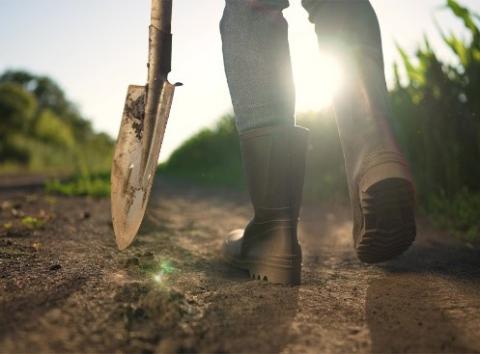Finally, let’s look at key concepts that flow from this initial topic to all topics:
- carbon neutral
- net zero emissions
- ACCUs
- Climate Active certification
- carbon dioxide equivalent (CO2-e).
The terms ‘carbon neutral’ and ‘net zero emissions’ are commonly used to describe taking action to reduce GHG emissions and increase carbon storage and taking other steps, such as use of offsets, to balance the remaining emissions.
Carbon neutrality is commonly described in terms of balancing all GHG emissions and carbon storage. It is sometimes described only in terms of carbon dioxide rather than all GHGs. Net zero is commonly described as taking steps to reduce all GHG emissions as much as possible and to use carbon storage to balance remaining emissions.
For a farmer or land manager, attaining carbon neutrality or net zero emissions may involve:
- insetting: doing carbon farming activities that reduce or avoid emissions or store carbon within their value chain, which could include their land and their supply chain
- offsetting: buying and cancelling carbon credits derived from projects that reduce or avoid emissions or store carbon elsewhere.
The concept of insetting is gaining increased focus in Australia and overseas. In some cases, it is considered to refer to carbon storage activities only. While insetting is a developing concept, typical features include:
- accounting for carbon storage or emissions reduction or avoidance when it occurs, without needing to demonstrate that it is additional to normal practice (as is required for generating carbon credits for offsets)
- accounting for any losses of stored carbon where those stores have previously been claimed.
Farmers and land managers interested in insetting as an option may need to consider its suitability for their purposes. If participating in a reporting system, you may need to check whether insetting is eligible. If it is eligible, you may also need to check for any rules on insetting. These might include rules for measurement, monitoring, verification, reporting, maintaining stored carbon over time and accounting for losses of stored carbon. Insetting may preclude claiming carbon storage, emissions reduction or avoidance benefits for other purposes (such as offsetting).
Topic 5 explains offsetting in more detail.
Any carbon neutral or net zero claims need to be robust and meet any applicable regulatory requirements. The Australian Competition & Consumer Commission monitors environmental and sustainability claims.
Australian Carbon Credit Units (ACCUs) are also known as carbon credits. Some people think carbon farming is the same as earning ACCUs, but that’s not the case.
The farmer or land manager might decide to do carbon farming activities:
- to earn ACCUs they can sell to generate income
- to reduce their carbon footprint
- to get a lower-interest sustainability loan from a financier
- to meet requirements from their supply chain
- for productivity and profitability gains.
We will return to these options throughout the course, and Topic 5 looks in detail at the requirements for the ACCU Scheme, previously known as the Emissions Reduction Fund. Participation in the ACCU Scheme is voluntary. Farmers and land managers can earn ACCUs by reducing emissions or storing more carbon in soil and vegetation. To earn ACCUs, they must follow detailed rules administered by the Clean Energy Regulator.
Climate Active is a voluntary Australian Government program that certifies credible voluntary climate action by businesses. Certification is available for organisations, products, services and other categories. Businesses seeking certification must set their emissions boundary (all sources of emissions that would be considered under a certification) and measure emissions in accordance with Climate Active’s rules and guidance material available on the Climate Active website.
Farmers can use Climate Active certification in marketing their products, appealing to environmentally conscious consumers and potentially commanding price premiums.
The main GHGs, as we have seen, are carbon dioxide, methane and nitrous oxide. We have also seen how these gases are all added up to indicate the percentage contribution of agriculture sector GHGs to national totals. Which raises the question: how do you add quantities of entirely different gases?
The answer is to calculate the ‘global warming potential’ (GWP) of a gas based on its ability to trap the sun’s heat and how long it stays in the atmosphere. Using its GWP, any GHGs can be converted to a 'carbon dioxide equivalent' (CO2-e) amount of gas. Using the values in the following table, we can see, for example, that one tonne of nitrous oxide is equivalent to 265 tonnes of carbon dioxide.
Looked at another way, 1 tonne of methane has a 28 times greater contribution to global warming than 1 tonne of carbon dioxide.
| Greenhouse gas | Global warming potential (GWPs) |
|---|---|
| Carbon dioxide | 1 |
| Methane | 28 |
| Nitrous oxide | 265 |
* The Intergovernmental Panel on Climate Change periodically updates these values as understanding of the physical properties of these gases improves.

